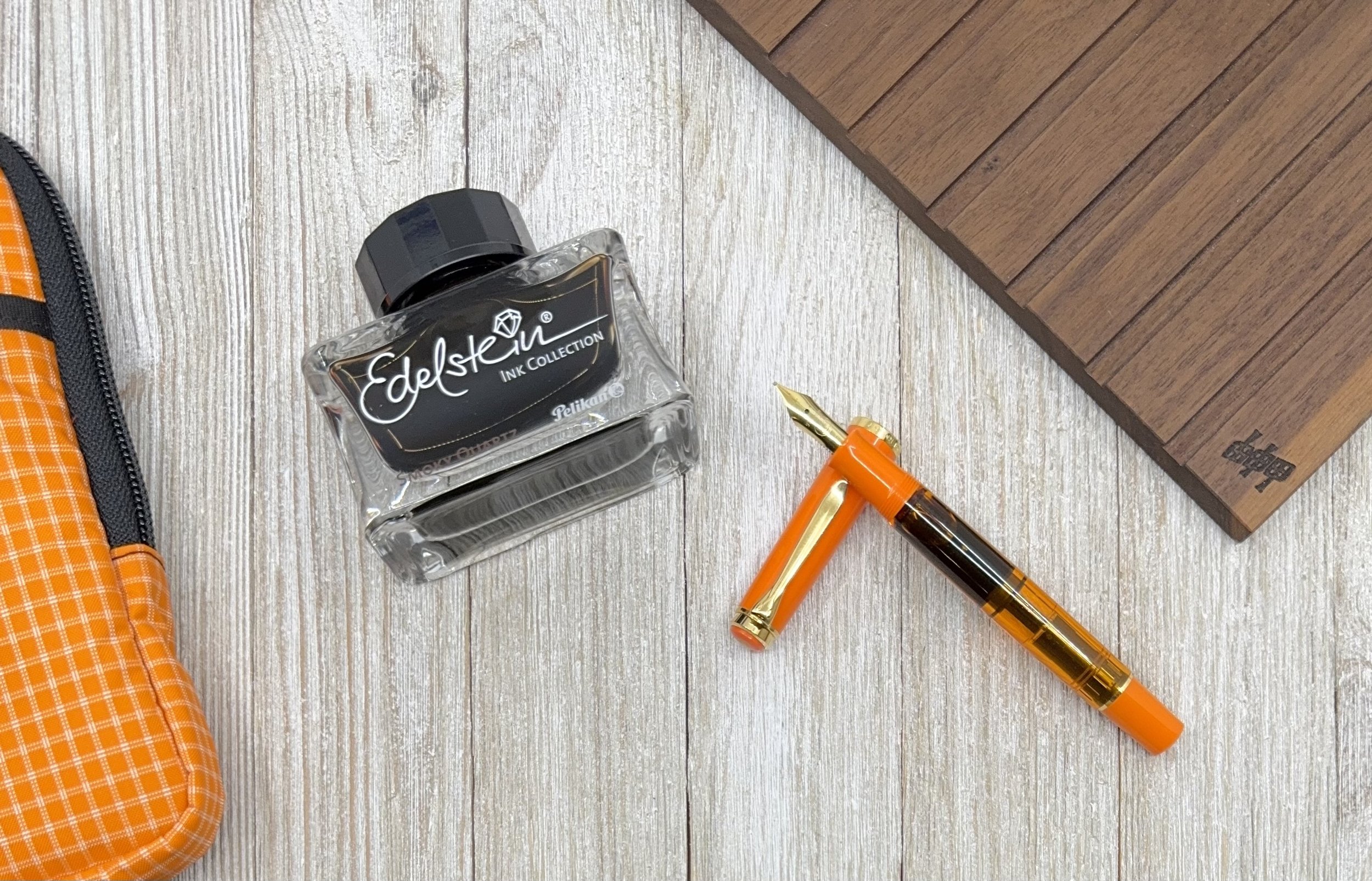Top to bottom: uniball Jetstream Lite Touch 0.5 mm, 0.7 mm, two 0.5 mm 4+1 multi pens.
There’s no point in burying the lede: the uniball Jetstream Lite Touch is better than the standard Jetstream in every line width and ink color I have tested so far.
uniball considers the Lite Touch a separate product from all existing Jetstream models. They did this recently with the uniball One as it compares to their other gel ink offerings, like the Signo lineup (which, in itself, has many different ink formulations.) With the Lite Touch, not only has the ink formulation changed, uniball added some design elements - and marketing - into the barrel.
The Jetstream is already the best ballpoint pen on the market, so how did uniball make it better? They focused on smoothness and lower friction while writing on the page, and I’d say they succeeded in comparison to existing models, if only slightly. The biggest change I see is that the ink is richer and darker compared to the standard Jetstream. I was already a big Jetstream fan, but the way the Lite Touch ink looks and performs puts it a clear step ahead.
There is a bit of “Keeping up with the Joneses,” in the Lite Touch release, as the quiet barrel of the Zebra bLen has become a hit on the store shelves. uniball redesigned the barrel interior and knock to limit vibration when writing, which can be an annoyance. An annoyance which I never had with any previous Jetstream model, but the market has dictated with the bLen and Pentel Calme that tip rattle is out, and quiet writing is in. What took them all so long?
Standard version 4+1 on top. Ignore the refill length difference between the two - the orange one has a specialty grip.
I had several models of the uniball Jetstream Lite Touch sent to me by a friend in Japan: 0.5 mm and 0.7 mm single barrel pens, and 0.5 mm 4+1 multi pen. When I began testing them alongside Jetstream pens I already owned, I could instantly tell a difference: the ink is darker.
The Lite Touch refill (top,) is marked SXR-L, assumedly for “Lite Touch.” SXR-L-7 for 0.7 mm, versus SXR-7 for the standard 0.7 mm. The refill shape is the same so you can swap the Lite Touch refill into your favorite Jetstream barrel.
The ink color differences may be difficult to pick up in pictures, but I can tell them apart easily in person.
Lite Touch is on the top, and maybe you can see a slightly darker line compared to the bottom.
The Black 0.5 mm and 0.7 mm Lite Touch inks are fantastic. And the Blue ink from the multi pen is the standout among all of the colors, with a richness that puts it as the single best Blue ballpoint ink on the market. I cannot wait until I can get it in an 0.5 mm single barrel.
These are the Lite Touch 0.5 mm multi pen refills, with the LT ink sample listed first for each color. It’s difficult to tell looking at the image, but in person I can tell them apart.
The only ink that performed poorly was the Green ink. This is expected, as it is always the worst performing of the 4+1 colors. If they dropped it from the lineup completely, it wouldn’t be missed. Red can be hit or miss, and the Lite Touch color is a hit. It’s nice enough to use in rotation with Black and Blue, instead of every once in a while.
Still tough to see in pictures.
Same with the 0.5 mm Blue ink comparison.
What does the future hold for the Jetstream Lite Touch? If we use the uniball One as a roadmap, different barrel types - hopefully still of the quiet variety - are likely in store. It wasn’t until the One F that I became a fan of that ink formulation, and I still prefer most of the Signo gel inks over the One.
With the Lite Touch, I don’t think that’s going to be the case at all. I think it is superior in every way to the existing Jetstream, and I wonder if it won’t completely take over in the next few years. The plan, for now, is to have both Jetstream lineups available. Superfans - like myself - will be relegated to paying a premium price for a premium product. In this case, it is well deserved.
Remember the Jetstream? Those were good times.
Availability of the uniball Jetstream Lite Touch is still mostly limited to Japan, for now. Wider release is expected in 2025, and, of course, there are many importers and second-hand markets where you can currently find these pens.
Enjoy reading The Pen Addict? Then consider becoming a member to receive additional weekly content, giveaways, and discounts in The Pen Addict shop. Plus, you support me and the site directly, for which I am very grateful.
Membership starts at just $5/month, with a discounted annual option available. To find out more about membership click here and join us!





























